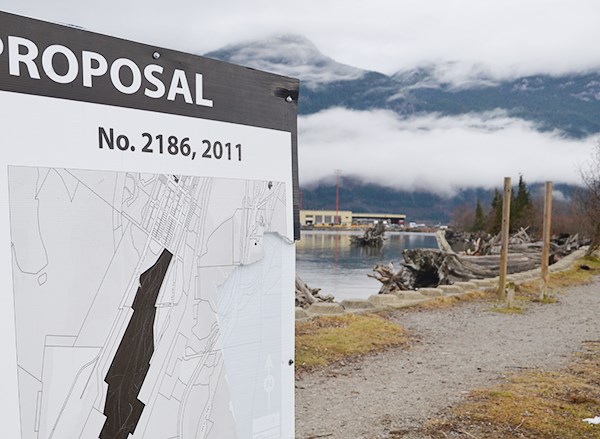A developer building on old industrial land along the Mamquam Blind Channel is asking for some of the money needed for diking to be considered for its Community Amenity Contribution (CAC).
Michael Hutchison of Squamish Cornerstone Developers is proposing his Sirocco development with multi-family units as well as floating homes on the waterfront by Loggers Lane between Winnipeg and Victoria Street.
The area will require diking according to provincial regulations. In a letter to council, Hutchison outlined the costs associated with the project as well as his CAC estimates. The District of Squamish has an interim CAC policy at present, so the request was kind of a test of its flexibility.
Through CACs, developers pay cash or provide community amenities such as affordable housing, childcare or general amenities as part of the development plans in site.
On Tuesday afternoon, Hutchison outlined his plans to council during a committee of the whole meeting. He is estimating the dike portion will cost $2.35 million, with just over $1.5 million for related enhancement work such as green space, a bike lane and street improvements. The developer asked for some flexibility from council on the new policy.
“Any time you make a policy, one size doesn’t fit all,” he said.
Much of the debate among council was about whether the plans for green space along the water should be considered a real community amenity or more private space that should be the responsibility of a strata corporation.
“Really, this is a privatized oceanfront, as far I can see,” Councillor Susan Chapelle said. “I don’t see it as a community amenity.”
She also questioned whether council should be discussing the largely residential development, which proposes some commercial space, on a site that is still technically zoned industrial.
There was also some concern that if the council agrees to the request to consider the dike costs as a CAC, it would mean less funding from major priorities for the community, notably affordable housing.
Another issue was whether council might be setting a precedent for other waterfront developments, with some suggesting the topic might be suitable for a wider conversation.
Councillor Doug Race said he opted for some flexibility on the request and that the project enhances downtown.
“This is public access. I don’t think you can characterize it any other way.”
There was a general sense that council could consider the enhancement work above the dike for CACs, but not the dike construction itself.
According to provincial regulations, the dike would have to be made of steel sheet piling rather than simple earth fill, which adds costs to the project.
For Hutchison, the request comes down to making the project economically feasible.
“There is only so much juice in the orange,” he said.
In response, Councillor Ted Prior said, “It looks like a pretty juicy orange, that one.”



